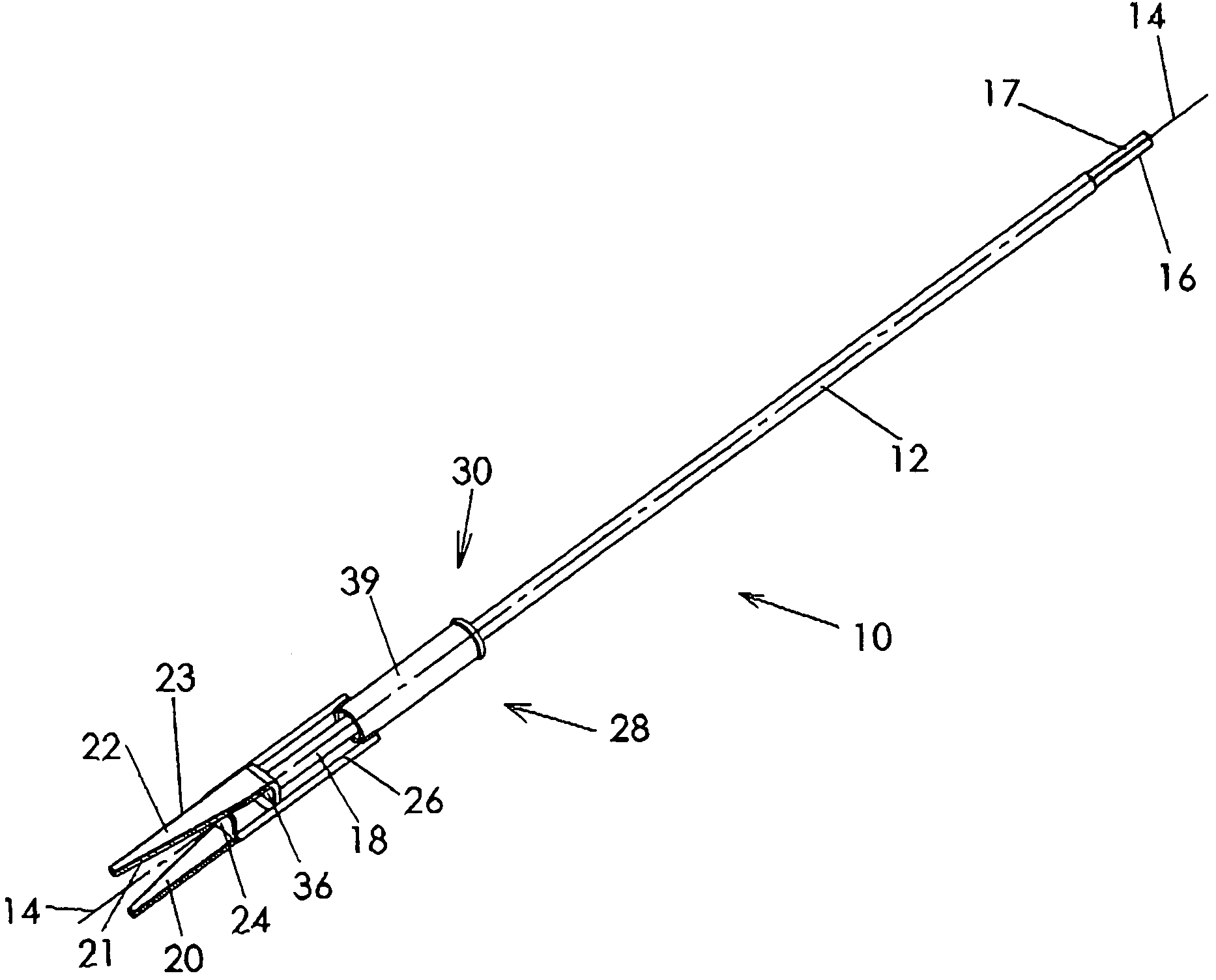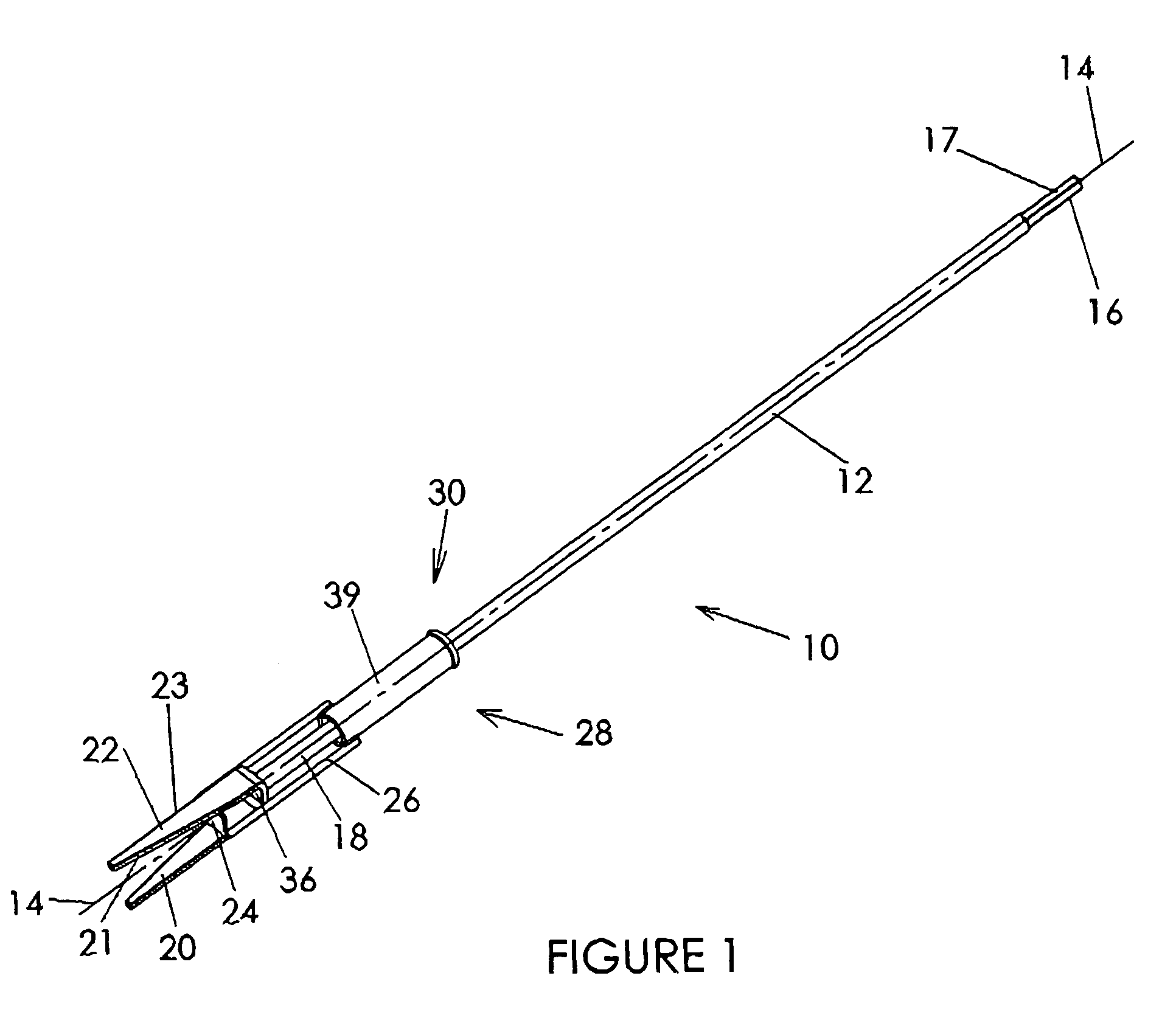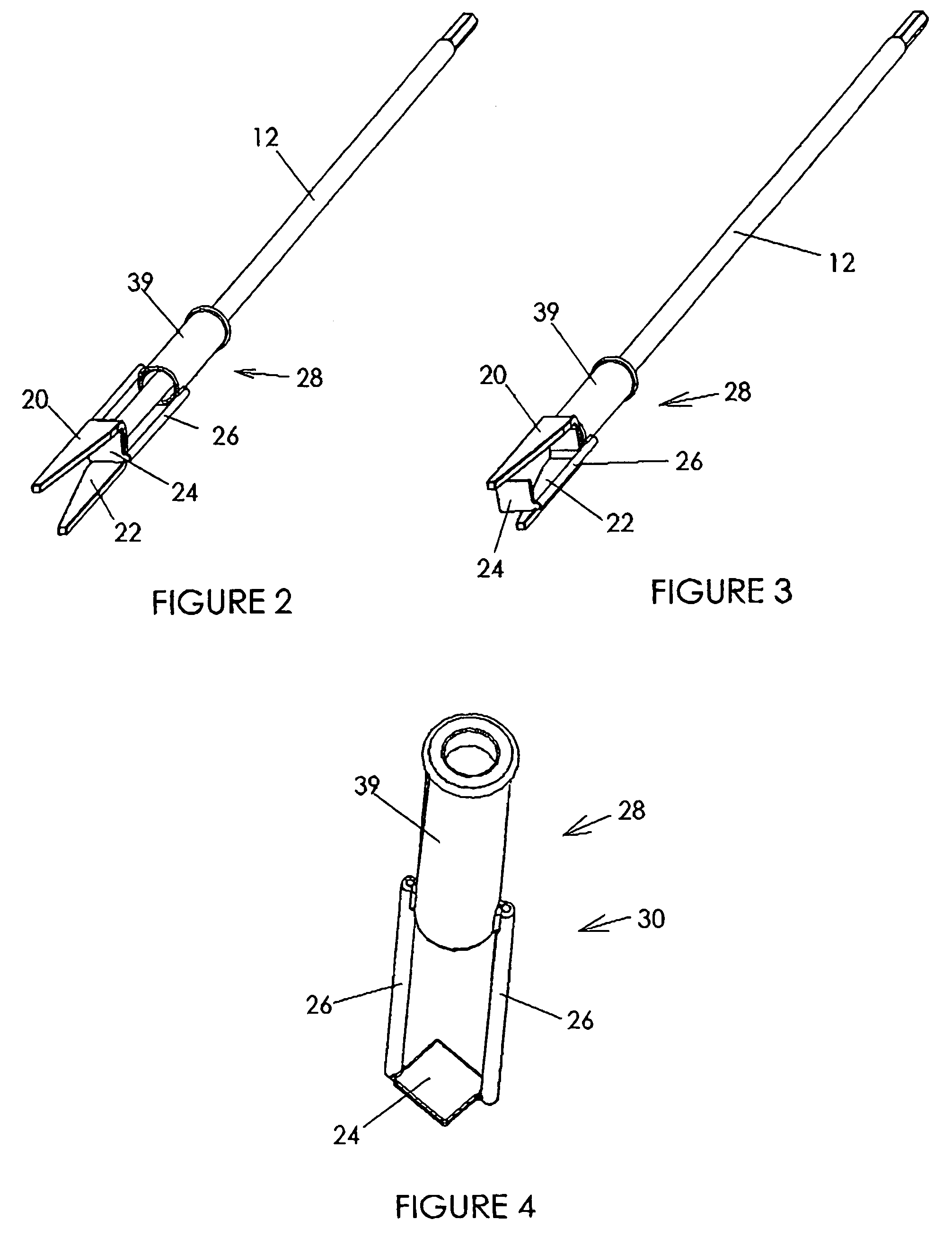Gardening tool
a technology for gardening and tools, applied in hand equipment, agriculture, hand tools and machines, etc., can solve the problems of weeds, prone to failure, and difficult to remove unwanted vegetation from lawns, gardens, plant beds, etc., and achieve the effect of avoiding weeds, avoiding weeds, and avoiding weeds
- Summary
- Abstract
- Description
- Claims
- Application Information
AI Technical Summary
Benefits of technology
Problems solved by technology
Method used
Image
Examples
Embodiment Construction
[0022]FIG. 1 conceptually illustrates a portion of a preferred embodiment of a gardening tool 10 for extracting vegetation having roots. The tool is ideally suited for extracting undesirable vegetation, referred to generally herein as “weeds,” which typically take root in areas in which other desirable vegetation is located, such as in a lawn or garden. Virtually all weeds have roots within “soil,” which is defined herein to include earth, potting soil, dirt, sand, any mixture thereof, or any other medium in which weeds take root. The tool is intended to capture and extract the weed primarily by its roots from within the soil. The tool 10 may also be used to produce holes in soil for such applications as planting bulbs and small plants, root feeding, and soil aeration.
[0023]The tool 10 has a shaft 12 rotatable about an axis 14, which is an imaginary line about which the shaft 12 and other portions of the tool 10 may rotate, and with respect to which portions of the tool 10 may be re...
PUM
 Login to View More
Login to View More Abstract
Description
Claims
Application Information
 Login to View More
Login to View More - R&D
- Intellectual Property
- Life Sciences
- Materials
- Tech Scout
- Unparalleled Data Quality
- Higher Quality Content
- 60% Fewer Hallucinations
Browse by: Latest US Patents, China's latest patents, Technical Efficacy Thesaurus, Application Domain, Technology Topic, Popular Technical Reports.
© 2025 PatSnap. All rights reserved.Legal|Privacy policy|Modern Slavery Act Transparency Statement|Sitemap|About US| Contact US: help@patsnap.com



